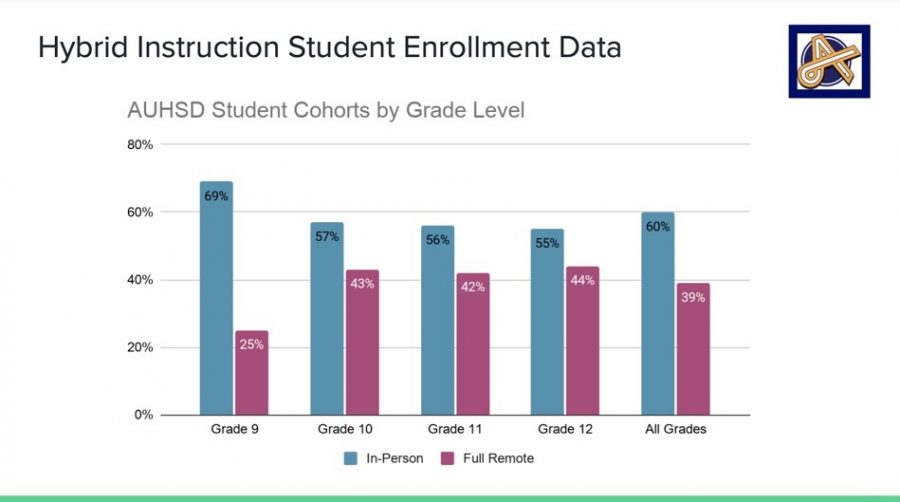The District Decides to Keep Current Hybrid Model for Remainder of School Year
April 20, 2021
Convening over zoom for their April 14 meeting, the Acalanes Union High School District Governing Board decided to maintain the current hybrid instructional model for the remainder of the school year, striking down a proposal to combine both in-person cohorts and transition to four on-campus days a week. Although several members of the public gave impassioned comments for the amended schedule, the Board ultimately decided to turn down the proposal, citing logistical challenges, a short time frame, and a concern for student mental health.
The proposal comes weeks after the Center for Disease Control and Prevention (CDC) amended social distancing guidelines for middle and high school students from six feet down to three feet. According to Superintendent John Nickerson’s presentation, there were also concerns that if students from both Cohorts A and B were to return to campus together, under the new three feet guidelines, COVID-19 could spread between students at a higher rate.
The social and emotional health of students was also a topic of discussion as board members weighed the pros and cons of expanding on-campus instruction.
According to a poll done on the Mirado Instagram, 68 percent of students surveyed answered that distance learning has had a negative affect on their mental health.
According to Associate Superintendent and Director of Education Services Aida Glimme, reports from Wellness Centers across the district predicted that with a transition to the expanded schedule, roughly 10 percent of students would switch from in-person learning to full-time distance learning. “The mental health effect on our students is something we are still finding out, I don’t think we fully understood how much of a challenge it would be,” Glimme said.
Glimme also shared that Wellness Centers across the district estimate that those same 10 percent of students were also the most likely to have suffered emotional and social learning losses during the pandemic.
Cathy Challacombe, French and English teacher at Acalanes High School, spoke on this topic, saying that the stress of another transition so close to the end of the year would upset the learning of her students. “I don’t think students will benefit from another change,” Challacombe said.
Another facet to the discussion of student mental health was the possible impact that a combination of Cohorts A and B could have on the students in Cohort C that would remain on Zoom as the rest of their peers went into the classroom.
Student representative to the Board, Miramonte senior Preston Nibley, gave voice to the concerns raised in public comment by Las Lomas junior Moxie Marsh, that students in Cohort C may experience increased social isolation if Cohorts A and B were to return to campus together. “I don’t think their decision back in January should be their judge, jury and executioner for how the rest of their school year goes,” Nibley said.
“I feel a little isolated only because it is hard to hear when the students in class are talking. Also most teachers kind of focus on the people in person,” Miramonte Junior Chloe Breznikar said. Although Breznikar shares some of Nibley’s feelings she says that she does not think she’d feel any more isolated if students were to return to class together since her school days would stay pretty much the same.
Nickerson also cited spacing concerns as a logistical hurdle to the proposed plan. He estimated that between 10 and 20 percent of the district’s classrooms would face spacing issues with students from both cohorts returning to campus under the three feet distancing guidelines. Although, he noted that this was not a problem that couldn’t be overcome.
The Board also addressed plans for the instructional model for the fall semester of the 2021-2022 school year. This time, the Board favored a return to the standard, pre-pandemic, cohort-free, five days a week schedule . Distance learning will still be available but only to students who are, according to communications from the district, “medically fragile” or “whose households would be put at a unique risk by in-person instruction”. Students may select their instructional models before the beginning of the fall semester and may transition in between the first and second semester, but transitions in the middle of semesters may be limited.
Before moving on to the next agenda item, Board members expressed their regret at having to finish the school year with limited in-person instructional minutes.
“It’s one of those things that hurts my heart to say but I do think that staying the course is the right thing to do,” Board member Christopher Grove said.








